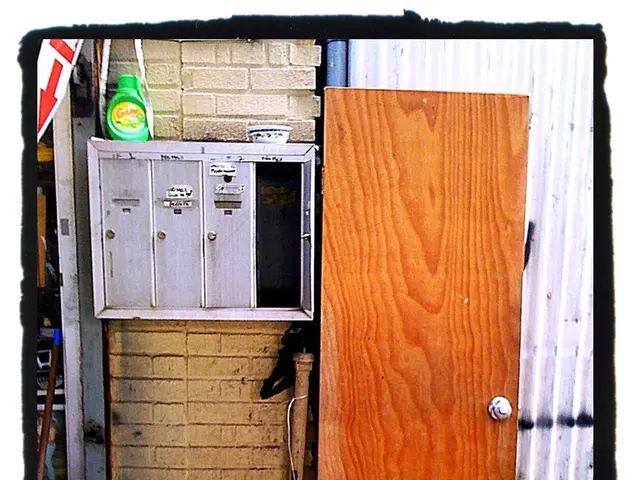Unseen Dangers While Fueling Up: Exploring the Hidden Perils and Truths Surrounding Gas Station Phone Use
In this fast-paced world, where juggling multiple tasks simultaneously earns the popularity badge, the stern warning "Don't Use Your Phone While Pumping Gas" stands out as more than just a suggestion. This advice, broadcast through station speakers or emblazoned on gas pumps, is based on genuine concerns for public safety. It's a word of caution rooted in the dance between static electricity and gasoline vapors - a dance that could lead to disastrous consequences.
From a scientific perspective, this dance is mesmerizing yet alarming. When pumping gas, even such an ordinary act can create a situation conducive to static electricity. This often underestimated force can spark the highly flammable gasoline vapors that waft at every gas station, leading to potentially catastrophic outcomes in a nanosecond.
Cell phones, as advanced as they may seem, live in the shadow of responsibility in this scenario. Although their role in stirring the flames may seem unlikely, it is not nonexistent. Reaching out for your phone, scrolling through messages, or even the ring of an incoming call can generate enough static electricity to ignite gasoline vapors under favorable conditions. It's modern technology and basic physics, unintentionally intruders in each other's worlds, with the potential to wreak havoc.
Why Gas Stations Issue Reminders
The cautious message regarding cell phone use at gas stations is not merely a catchy slogan but a vital safety guideline. It is anchored in the physics of static electricity and its potentially disastrous consequences at the gas pump, where the volatile nature of fuel can quickly escalate a routine stop into a life-threatening situation.
Concern over mobile devices at the filling station largely revolves around the threat of static discharge - an unexpected spark that can ignite gasoline vapors, leading to fires or explosions. However, the exaggerated narrative that cell phones significantly contribute to the risk is primarily a misconception.
Separating Fact from Fiction
Both the American Petroleum Institute (API) and the National Fire Protection Association (NFPA) have dug deep into gas station fire causes. Their findings reveal that static discharge from the human body is more likely to ignite fuel vapors than cell phones. This static often sparks when an individual re-enters their vehicle during the refueling process and subsequently touches the nozzle or vehicle's metal parts, creating a conduit for static to discharge.
Let's navigate the intricate path of safety measures at fuel stations, debunking common myths and shedding light on truths.
How Gas Pumps Work Safely
Modern fuel dispensers are equipped with cutting-edge technology aimed at minimizing the risks associated with static electricity and fuel vapor explosions. These features are engineered to prevent static electricity buildup and manage gasoline vapors, ensuring a safer experience for both drivers and vehicles.
Safety features on gas pumps include vapor recovery systems and automatic shut-off nozzles. Vapor recovery systems catch the gasoline vapors before they escape into the atmosphere, keeping a flammable environment at bay. Meanwhile, automatic shut-off nozzles prevent scenarios where gasoline tanks overflow, increasing the risk of gasoline vapors igniting.
These innovations showcase the industry's dedication to safeguarding refueling processes, from vehicles to drivers, by tackling electric charges and controlling fuel vapors.
Dispelling Common Myths
The landscape of safety at fuel stations is riddled with misinformation. Let's dive into the intricacies of common beliefs and the facts that lay them bare.
The Myth: Cell Phones Cause Gas Station Fires
The narrative stating that cell phones are the primary culprits behind gas station fires persists, leading to warnings and restrictions at fuel stations worldwide. However, an analysis of official releases and findings from the Petroleum Equipment Institute suggests that cell phones rarely, if ever, cause fires at gas stations. Documented cases of fires have shown that the causes were typically unrelated to mobile devices.
The Truth: Understanding Static Electricity
One of the most controversial topics revolves around static electricity at fuel stations. This force, more capable of igniting fuel than a mobile device, becomes dangerous when it builds up on the body and gets discharged onto the pump nozzle or any metal part of the vehicle. This scenario highlights why returning to your vehicle while refueling could be more hazardous than using a cell phone near the pump.
Best Practices for Safe Refueling
Fueling your car requires careful navigation. By being aware of potential risks and adopting the right safety practices, you can maximize safety at the pump, minimize static electricity risks, and foster a safer environment for all.
Tips to Minimize Static Electricity Risks
- Keeping Your Phone Away from the Fuel Tank: Keep your phone inside the car or, if needed, place it at a safe distance from the fuel tank when operating outside the vehicle.
- Grounding Yourself Before Touching the Fuel Nozzle: Before touching the fuel nozzle, touch a metal surface away from the nozzle to discharge any static electricity, reducing the possibility of a spark igniting fuel vapors.
- Paying with Contactless Payment Methods at the Pump: Using contactless payment methods like credit cards at the pump can minimize the number of human movements, thus reducing the risk of generating static electricity that could lead to a spark.
Guidelines for Using Electronic Devices Near Gas Pumps
In our interconnected world, distancing ourselves from our electronic devices can be challenging but essential for safety. Here are some guidelines to help you use electronic devices at fuel stations safely.
- Understanding Safe Distances: For safety, maintain a safe distance from gas pumps and fueling areas while using any electronic device. Staying alert keeps you focused on the refueling process, ultimately enhancing the overall safety.
- Adhering to Gas Station Signs and Instructions: Gas stations broadcast signs and instructions to ensure safety; following these guidelines will mitigate potential risks, contributing to a more secure refueling experience for all.
In conclusion, the chatter regarding cell phone use at gas stations, combined with the intricacies of static electricity, ties into a broader call to focus on safety and minimize distractions. As we navigate the comforts of modern technology, upholding practices that safeguard our wellbeing and that of others is crucial.
By fostering a culture of awareness and adherence to safety precautions, we can significantly decrease the risk of accidents during the refueling process. It is not only about individual safety but also about contributing to a collective sense of security and well-being within our communities. Refueling, in this light, transcends the ordinary, becoming a commitment to protecting ourselves and those around us.
References:
[1] Gerberich, S. R., Bridge, J. A., Johnson, R. W., Cukor, A. R., & Kân, K. (n.d.). Gasoline station fires. National Fire Protection Association. Retrieved February 5, 2023, from https://www.nfpa.org/News-and-Research/Fire-statistics-and-research/Fire-statistics/U.S.Fire-problem/%20State%20problem%20profiles/Gasoline%20station%20fires
[2] American Fuel & Petrochemical Manufacturers (2023). Static Electrical Spark Ignition: A Review of Possible Gasoline Static Occurrences During Dispensing Operations. Retrieved February 5, 2023, from https://afpm.org/documents/Reports/static_spark_ignition.pdf
[3] U.S. Consumer Product Safety Commission (2023). Fire. Retrieved February 5, 2023, from https://www.cpsc.gov/safety-education/safety-guides/fire/minimizing-the-risks-of-fire-at-the-gas-pump/
[4] U.S. Environmental Protection Agency (2023). Ozone Transport Commission. Underground Storage Tank Overfill Prevention Control. Retrieved February 5, 2023, from https://www.epa.gov/underground-storage-tanks/underground-storage-tank-overfill-prevention-control
[5] European Union (2022). Gas station safety. Retrieved February 5, 2023, from https://ec.europa.eu/docsroom/documents/7127/attachments/4/translations/en/renditions/pdf
- In the realm of health-and-wellness, it's crucial to be mindful of potential hazards at gas stations since static electricity, a factor often underestimated, can ignite the highly flammable gasoline vapors, leading to disastrous consequences.
- As science reveals, modern technology such as cell phones can play a role in stirring static electricity at gas stations, although their contribution to gas station fires might be overstated. The misconception arises from the potential for cell phones to generate static electricity when used near the pump.








